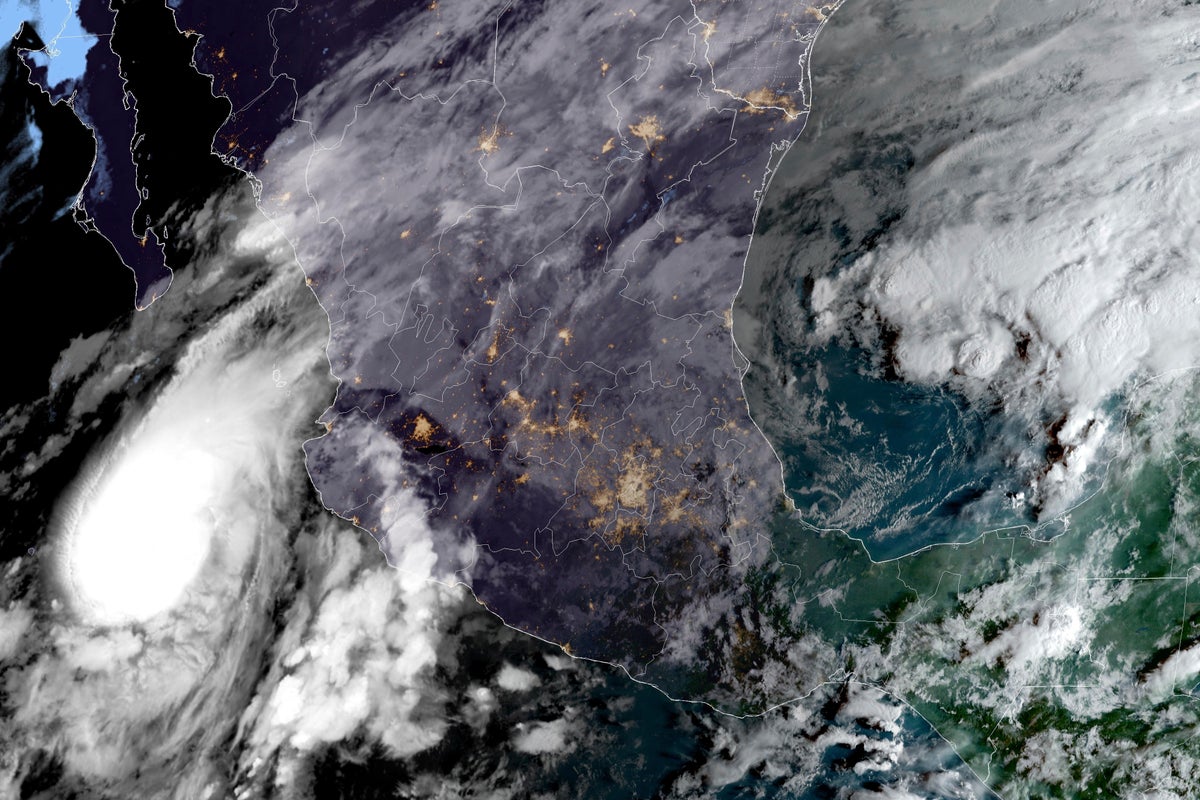
Hurricane Lidia made landfall in Mexico on Tuesday night as an “extremely dangerous” Category 4 storm and continued to move inland.
The storm hit near Mexico’s Pacific coast resort of Puerto Vallarta at around 9pm on Tuesday night, bringing wind speeds of up to 140mph (220kph).
The storm began to weaken after landfall as it moved inland but still remained a powerful hurricane, with the US National Hurricane Center (NHC) downgrading it to Category 2 status.
Even at its weakened state, Lidia carried winds of 105mph (165kph) late at night on Tuesday and it continued to wreak havoc, leaving a trail of destruction in its path.
The states of Jalisco and Nayarit reported downed trees and electricity cables, as well as landslides over some major roads in the region.
Jalisco governor Enrique Alfaro posted on X an hour-and-a-half after Lidia made landfall that the storm had generated “extraordinary rain and high surf” in various places.
Although the storm prompted the opening of 23 shelters in the state, there were no immediate reports of injuries or deaths. However, a few dozen people sought refuge in shelters in Puerto Vallarta, officials said.
As Lidia continued to move east-northeast on Wednesday morning at about 17mph (28kph), forecasters predicted it could still be a Category 1 hurricane when it brushed by Guadalajara – Mexico’s second-largest city – around midnight.
Lidia was expected to soak the region with heavy rain and the hurricane centre warned of possible flash flooding.
The centre forecast rainfall totals of four to eight inches, with localised totals of 12 inches possible in some places in the state of Nayarit, southern portions of the state of Sinaloa, and coastal areas of Jalisco.
Local authorities cancelled classes in communities around the coast.
The hurricane then moved south of Puerto Vallarta to a point inland about 30 miles (50km) east of the resort, and about 90 miles (150km) west of Guadalajara – the capital of Jalisco state.
The NHC said Lidia‘s eye appeared to have reached land near Las Penitas, a sparsely populated peninsula in the western state of Jalisco.
Like several tropical storms this season, Lidia also went through a rapid intensification in the warm ocean waters, becoming a Category 4 hurricane from a Category 1 hurricane on Tuesday in just a little over nine hours, Colin McCarthy, whose X account “US Stormwatch” follows extreme weather globally, noted.
The expected impact comes one day after Tropical Storm Max hit the southern Pacific coast, hundreds of miles away, before dissipating. Rains from Max washed out part of a coastal road in the southern state of Guerrero.
In 2015, Hurricane Patricia, a Category 5 hurricane, also made landfall on the same sparsely populated stretch of coastline between the resort of Puerto Vallarta and the major port of Manzanillo.
(Additional reporting by agencies)







